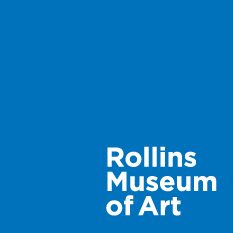Caitlin Keogh (American, b. 1982), Renaissance Painting, 2016, Acrylic on canvas, 84 x 63 in., The Alfond Collection of Contemporary Art at Rollins […]
Work of the Week: Antonio Martorell, “¿Quéslaque? Es que la…”
Antonio (“Toño”) Martorell (born 1939) is a Puerto Rican multi-media artist, educator, and writer, and a pillar of Caribbean contemporary art history. An intellectual, an artist of artists, and an artist of and for the people, Martorell‘s prolific body of work spans over six decades, consistently making references to the histories, diversity and resilience of Puerto Rican culture in face of adversity.
Work of the Week: Tobi Kahn, “Patuach Sagur Patuach”
Tobi Kahn (American, b. 1952), Patuach Sagur Patuach, 2012, acrylic on wood, 9 3/4 x 12 3/8 x 8 3/4 in., A Gift from the […]
Work of the Week: Catherine Yass, “Lighthouse (North north west, distant)”
Catherine Yass (British, b. 1963), Lighthouse (North north west, distant), 2011, Photographic transparency, lightbox, 50 ¾ x 40 ¾ in., The Alfond Collection of Contemporary […]
Work of the Week: Hiram Powers, “Faith”
Hiram Powers (American, 1805-1873), Faith, ca. 1867, white seravezza marble, 29 in. x 20 in. x 12 in. sculpture, Gift of Hiram Powers II, grandson […]
Work of the Week: Amy Sillman, “After Metamorphoses”
Amy Sillman (American, b. 1955), After Metamorphoses, 2015-16, Single-channel video on 5:25 min. looped, color, sound. The Alfond Collection of Contemporary Art at Rollins […]
Work of the Week: Daniel Lind-Ramos, “Vencedor: 1797 (Victorius: 1797)”
Daniel Lind-Ramos (Puerto Rican, b. 1953), Vencedor: 1797 (Victorius: 1797), 2018-2019, Mixed media, 67 x 70 x 33 in. The Alfond Collection […]
Work of the Week: Willem de Kooning, “Two Women”
Willem de Kooning (American, 1904-1997), Two Women, 1973, Lithograph on paper, 18 x 15 in. Museum Purchase from the Wally Findlay Acquisition Fund, 1997.13 A […]
Lavinia Fontana: The Dead Christ with Symbols of the Passion
Outside of my bias of having been trained as an Italienist, The Dead Christ with Symbols of the Passion, is […]
Work of the Week: Becky Suss, “Houseboat on Dull Lake in the Valley of K”
Becky Suss (American, b. 1980), Houseboat on Dull Lake in the Valley of K, 2019, Oil on canvas, 84 x 144 in. The Alfond Collection […]
Work of the Week: Käthe Kollwitz, “Untitled (Mob [Family] with Dead Child)”
Käthe Kollwitz (German, 1867–1945), Untitled (“Mob [Family] with Dead Child”), n.d., Dry point etching, Gift of Mrs. Ruth Funk, Cornell Fine Arts Museum 2001.04.09.PR […]
Work of the Week: Carmen Herrera, “Untitled”
Carmen Herrera (Cuban, 1915-2022), Untitled, 2013, Acrylic on canvas, 72 3/64 x 36 7/32 in. The Alfond Collection of Contemporary Art, Rollins Museum of Art, […]
Work of the Week: Shirin Neshat, “In Deference”
Shirin Neshat (American, Iranian, b. 1957), In Deference, 2018, Dye-sublimination on aluminum, 25 9/16 x 40 in. The Alfond Collection of Contemporary Art at Rollins […]
Work of the Week: Dawoud Bey, “Janice Kemp and Triniti Williams”
Dawoud Bey (American, b. 1953), Janice Kemp and Triniti Williams, 2012, Archival pigment prints mounted on dibond, 40 x 64 in (40 x 32 […]
Work of the Week: Jacob Lawrence, “Revolt on the Amistad”
Jacob Lawrence (American, 1917-2000), Revolt on the Amistad, 1989, Silkscreen, 35 x 25 3/8 in. Museum Purchased from the Wally Findlay Acquisition Fund, 1995.26., © […]
